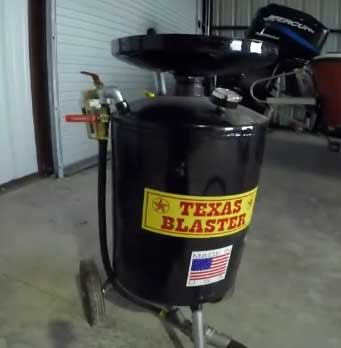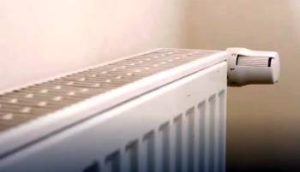Unraveling the complexity of surface preparation tasks could be as simple as securing the right tool. Among a plethora of blasting tools, one brand has made an indelible mark on the industry – the Texas Blaster.
This article takes an analytical look into what the Texas Blaster brings to the table, aiming to provide detailed, real-user reviews of this renowned product. So, without further ado, let’s jump right in!
The Real Scoop on the Texas Blaster
There’s a reason why Texas Blaster has gained its position as a significant player in the surface preparation industry. Its line of versatile, sturdy, and easy-to-operate tools ticks all the boxes for both professional and DIY users. The first key aspect to note is its sturdy, solid construction.
Built with high-quality steel, Texas Blasters stand up to the harshest conditions, proving their worth in longevity and durability.
- Functionality and Efficiency

Where Texas Blaster really shines is in its functionality.
The equipment allows for a range of media to be used, including sand, soda, crushed glass, and more.
This means it can be used for a variety of tasks, from heavy rust and paint removal to delicate jobs like blasting wood or glass.
Despite its impressive heavy-duty capabilities, the Texas Blaster isn’t a monster to operate.
Users rave about its simplicity and ease of use, a feature that adds immense value, especially for novice blasters.
- Performance and Power
Texas Blaster’s power and performance set it apart from other brands in the market. Users have consistently reported a smoother, more efficient operation, thanks to the superior pressure it provides.
It maintains a steady flow, reducing the need for constant adjustments and resulting in a cleaner, more professional result.
- Bang for the Buck
For its price point, the Texas Blaster delivers exceptional value. Buyers appreciate the combination of power, versatility, and durability at an affordable price. Given its long-lasting construction and the range of tasks it can handle, it’s an investment that’s worth every cent.
- Customer Service and Support
A key feature often highlighted in Texas Blaster reviews is their excellent customer service. The brand’s commitment to providing efficient and timely support, paired with their comprehensive troubleshooting guides and maintenance tips, is truly commendable.
Unearthing the Potential Drawbacks of the Texas Blaster
While the Texas Blaster has garnered plenty of positive reviews and has impressive features, no product is without its downsides. In the spirit of balanced analysis, it’s essential to delve into the potential drawbacks users have pointed out.
- Heft and Portability
One of the more prominent concerns raised about the Texas Blaster is its weight. It’s a solid, durable machine, but this comes at the cost of portability. Some users have found it somewhat difficult to maneuver, especially in tight or elevated spaces.
- Noise Levels
Another point of critique is the noise level. The Texas Blaster, like most blasting equipment, can be quite loud during operation.
This might not be a deal-breaker for everyone, but if you work in a noise-sensitive environment or prefer quieter tools, it’s a factor worth considering.
- Learning Curve
While the Texas Blaster is praised for its simplicity, first-time users might face a slight learning curve. Operating the machine, adjusting the pressure, and switching blasting media require some practice to get the hang of.
- Availability of Replacement Parts
While Texas Blaster offers excellent customer service, there have been occasional concerns regarding the availability of replacement parts. It’s not a widespread issue, but something to consider if you plan to use your blaster extensively.
A complete video review of it only for YOU!
Frequently Asked Questions (FAQ)
Yes, for delicate materials like wood, a soda blaster is generally better than a sand blaster. Soda is less abrasive than sand, reducing the risk of damaging the wood. However, Texas Blaster’s versatile design allows for both types of media, offering a flexible solution for different tasks.
Using a Texas Blaster is straightforward. Fill the tank with your preferred blasting media, connect your air supply, and adjust the pressure. Once set, aim the blasting nozzle at the surface you’re treating and squeeze the trigger. Remember to always wear protective gear, including gloves, a mask, and safety glasses.
The ideal pressure for a sand blaster depends on the task at hand. For tough jobs like removing rust or old paint, a higher pressure of around 90-100 PSI is recommended. For delicate tasks, a lower pressure around 40-50 PSI will suffice. With Texas Blaster, adjusting to these pressures is a breeze, making it an even more versatile tool.
Conclusion: Should You Invest in a Texas Blaster?
Based on multiple Texas Blaster reviews, the answer is a resounding yes. Its durability, versatility, and power, combined with the excellent customer support, make it an all-around winner.
Whether you’re a professional seeking a reliable tool for demanding tasks or a DIY enthusiast looking to upgrade your toolkit, the Texas Blaster could be just the equipment you need.
Remember that the best tool is one that fits your specific needs. Take the time to analyze your surface preparation requirements and compare different blasters before making a decision.
Texas Blaster, with its glowing reviews and proven performance, should undoubtedly be on your shortlist.



